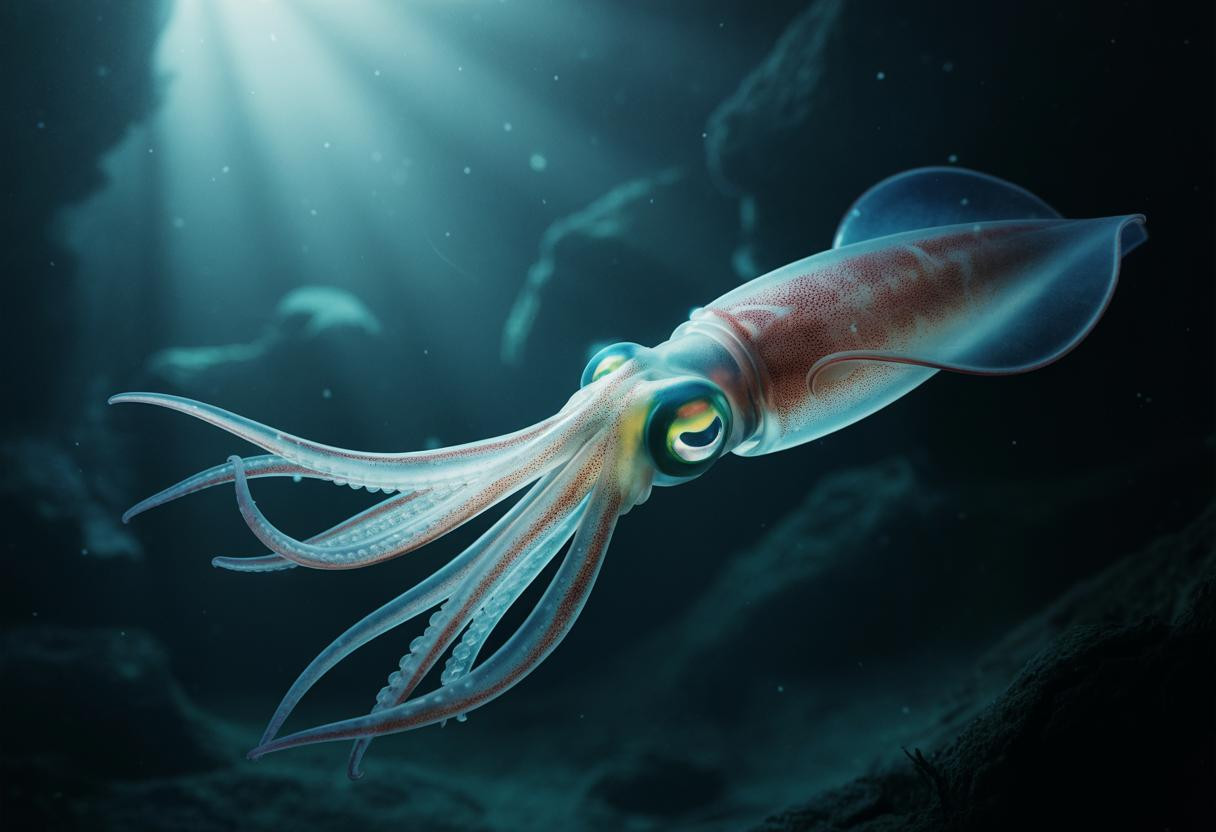In a historic breakthrough for marine science, researchers have captured the first-ever footage of a living colossal squid in its natural deep-sea habitat. This momentous discovery, announced in April 2025, comes exactly 100 years after the mysterious creature was first scientifically identified. The juvenile specimen was filmed at a depth of 600 meters near the South Sandwich Islands, giving scientists their first glimpse of one of the ocean’s most elusive inhabitants.
A century-long mystery finally revealed
For decades, the colossal squid has existed more as legend than scientific reality. Prior to this breakthrough, these massive cephalopods were only known from remains found in whale stomachs or rare specimens caught by fishing vessels. “This is comparable to photographing a living dinosaur,” explains Dr. Kat Bolstad of Auckland University of Technology, who verified the footage. “It’s humbling to think these magnificent creatures have no idea humans even exist.”
The transparent juvenile measured approximately 30 centimeters, offering a stark contrast to adults that can reach 7 meters and weigh up to 500 kilograms—making them the heaviest invertebrates on Earth. Like finding a pet in an unexpected place, researchers weren’t specifically searching for the colossal squid when they made this chance encounter.
Technological marvel behind the discovery
The footage was captured using the Schmidt Ocean Institute’s remotely operated vehicle SuBastian, showcasing how advanced exploration technologies are revolutionizing marine science. Similar to how new AI tools are changing how we search for information, these underwater robots are transforming our understanding of deep-sea ecosystems.
The 35-day expedition was a collaborative effort involving international research institutions, highlighting the importance of global partnerships in scientific discovery. “This breakthrough reminds us that our oceans remain the last great frontier on Earth,” notes Dr. Jyotika Virmani, Executive Director of the Schmidt Ocean Institute.
What makes colossal squids so fascinating?
- They possess the largest eyes in the animal kingdom (up to 27 cm in diameter)
- Their tentacles feature unique swiveling hooks for capturing prey
- They can change from transparent juveniles to opaque adults
- They’re key predators in the Antarctic marine ecosystem
“Finding a living colossal squid is like discovering an unexpected forgotten treasure—it reveals something valuable that was always there but just beyond our reach,” says marine biologist Dr. Aaron Evans.
Implications for ocean conservation
This discovery underscores the vast unexplored biodiversity in our oceans. Much like travelers who discover hidden gems when venturing beyond tourist hotspots, scientists are continually amazed by what lurks in the ocean depths.
The footage provides vital baseline data for understanding how climate change might affect deep-sea species. These mysterious creatures inhabit a world as alien to us as distant planets, yet their ecosystem faces threats from human activities.
What’s next for deep-sea exploration?
- Attempts to film adult specimens in their natural habitat
- Studies of feeding behavior and reproduction
- Development of even more advanced underwater imaging systems, rivaling the performance leaps seen in next-generation mobile processors
This groundbreaking footage represents just the beginning of our understanding of these magnificent creatures. Like peeling back the first layer of an infinitely complex onion, we’ve only just begun to comprehend the mysteries of the deep ocean.
Will we ever fully understand the ocean’s deepest secrets?
As technology advances and expeditions venture deeper, each discovery illuminates another corner of our mysterious blue planet. The colossal squid, once a shadowy legend, now swims in the light of scientific understanding—yet countless more secrets await in the ocean’s depths, patiently waiting for their moment of discovery.
